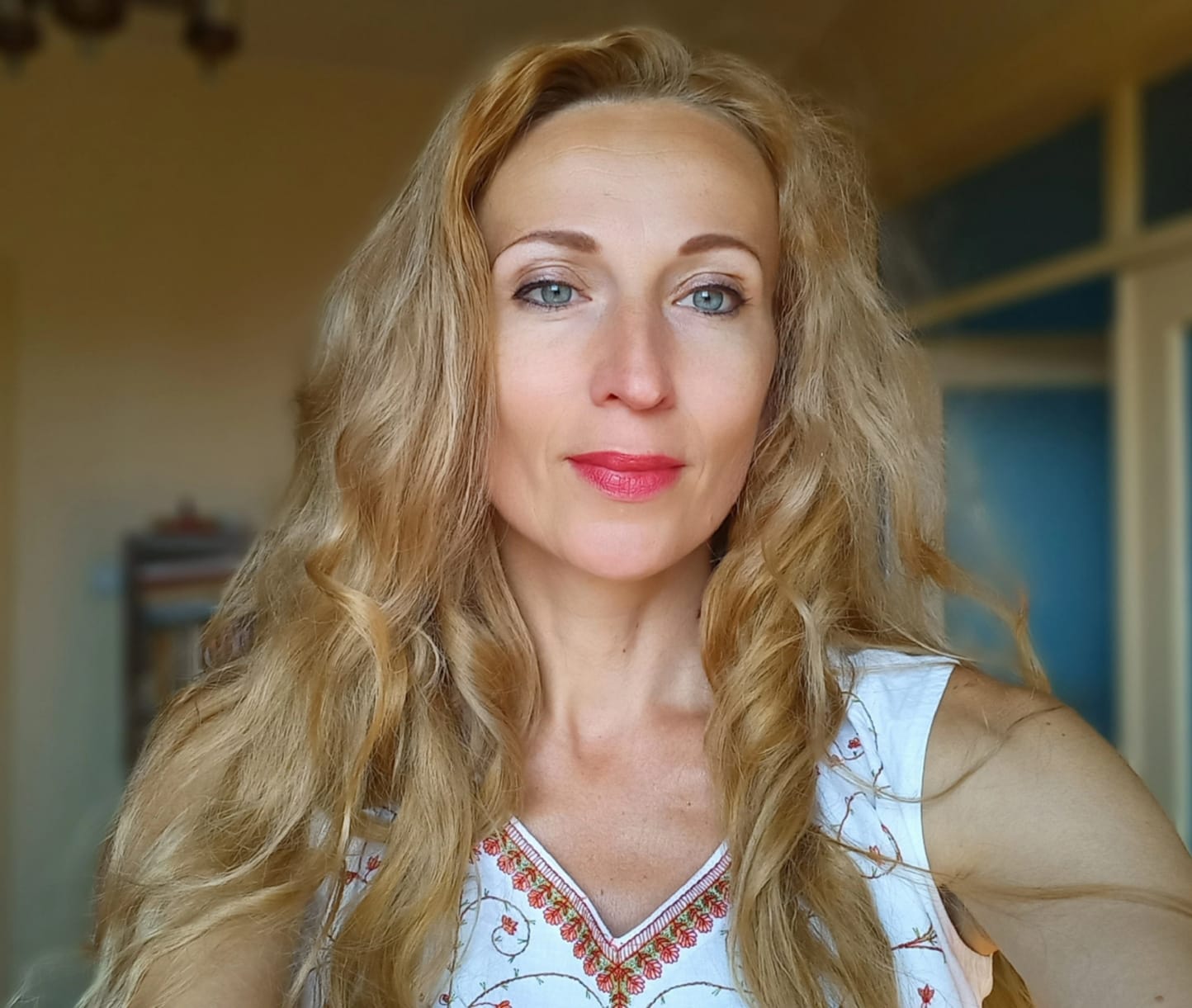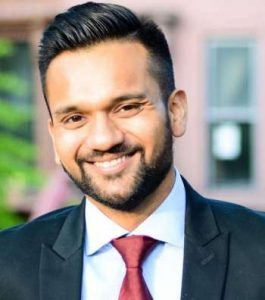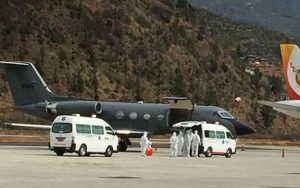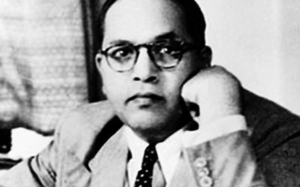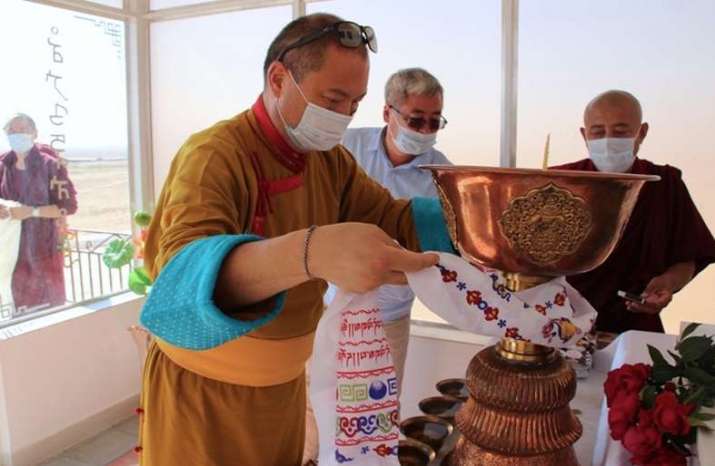
Telo Tulku Rinpoche, the shadjin lama (head lama) of the Kalmyk people and Buddhist monks from the central khurul (monastery) of Kalmykia, the Golden Abode of Shakyamuni Buddha, conducted a ritual of consecration for the Zulyn Ger (Lamp House) in memory of Kalmykia’s ancestors.
The ceremony was held on 29 August at the foot of the Bashmin Tolga mound in Ketchenerovsky District, in the northwest of the Russian republic. The site is historical for Kalmyks because the famous Tsannid Chöra* khurul, which served as a center for higher Buddhist education, was located there from 1907–22.**
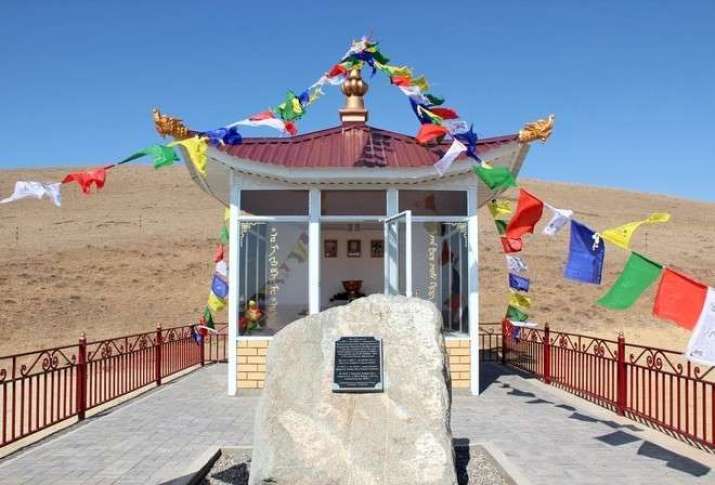
Tsannid Chöra was built thanks to the help of the Buryat lama Agvan Lobsan Dorjiev (1853–1938), who was the representative to Russia of the 13th Dalai Lama, Thubten Gyatso. It was symbolic that Telo Tulku Rinpoche, the honorary representative of the 14th Dalai Lama, Tenzin Gyatso, to Russia, Mongolia, and members of the Commonwealth of Independent States, led the consecration of the Zulyn Ger in the place where the emblematic monastic school gathered Buddhist monks for 15 years.
The ceremony was attended by residents of Ketchenerovsky, lay Buddhists from outside the district, and representatives from different Kalmykian Buddhist centers. Relatives of lamas and gelongs (monks) who served in Tsannid Chöra khurul also came to the solemn event. During the ceremony, the shadjin lama of the Kalmyk people, together with one of the oldest residents of the region, Valentina Mandzhieva, cut the ribbon.
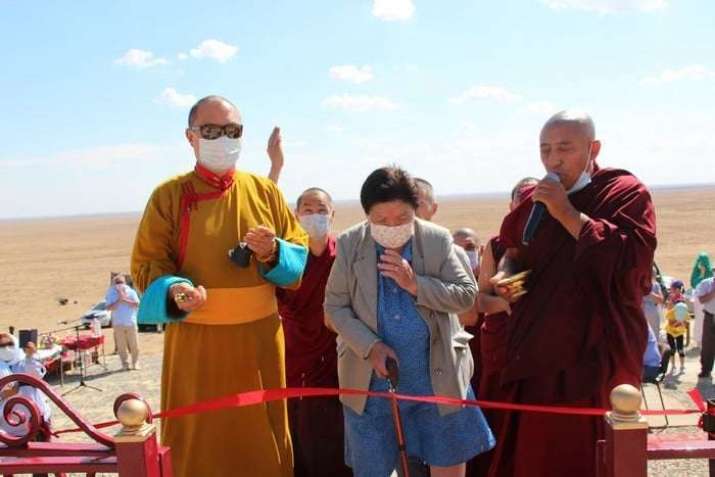
According to Telo Rinpoche, the opening of Zulyn Ger was planned a long time ago, but was delayed as a result of the novel coronaviruspandemic. During the ceremony, Rinpoche explained the importance of the Tsannid Chöra khurul: “In the past, Kalmykia had more than 100 small and large khuruls. But if we speak about which khurul of all that existed at that time was the most famous, then, from the point of view of education and philosophy, that khurul was Tsannid Chöra. It was indeed a higher education institution where the clergy were educated.” (Golden Abode of Shakyamuni Buddha)
“In the past, almost all temples, suburgans (stupas), and Buddhist buildings were destroyed to the very last brick, but our faith could not be destroyed. Despite those difficult times, our people preserved the history and the great importance of Tsannid Chöra khurul in their hearts. And nowadays, thanks to the preserved faith and to the efforts of those people who were mentioned, we open Zulyn Ger in this sacred place. Today, we will pray with the monks from the Central khurul of Kalmykia, who were educated in Buddhist monasteries, so that we can rebuild our famous Tsannid Chöra khurul,” Telo Rinpoche added. (Golden Abode of Shakyamuni Buddha)
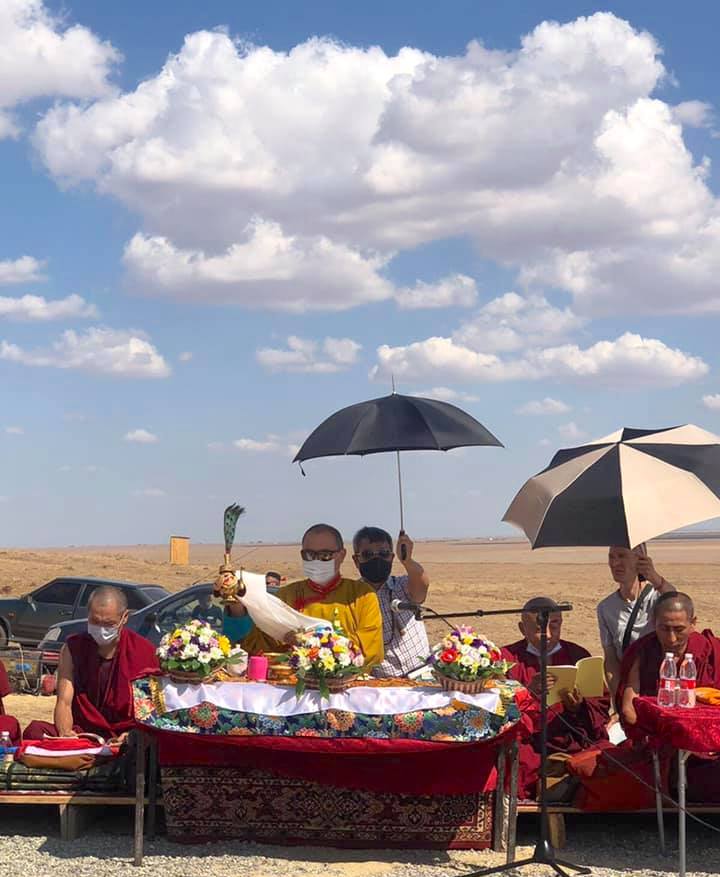
From khurul.ru
During the ceremony, the monks made prayers to the Three Jewels: the Buddha, the Dharma, and the Sangha, and then performed two rituals: The first was a chusol (purification ritual), during which all buddhas and bodhisattvas were invoked and asked to purify the area, including the Lamp House. The second was a rabne—ritual of consecration.
The Zulyn Ger is a small building, at the center of which a large butter lamp is installed. The butter lamp, a gift from the Golden Abode of Shakyamuni Buddha, is capable of burning continuously for up to a month. The lamp was ordered from India and offered from the monastic community of Kalmykia, the rector of Choikorling Monastery, and from Nikolai Khazikov, Arslan Khazikov, Antonina Tserenova, and Bata Taraev. According to one of the main sponsors, Nikolai Khazikov, the opening of Zulyn Ger was a noble deed and a tribute to the ancestors of Kalmykia: “We dedicate this offering to the memory of all the inhabitants of Kalmykia, who have not lived until now. They couldn’t have imagined that a stupa would be built and the khurul would be revived. We built Zulyn Ger in their honor.”
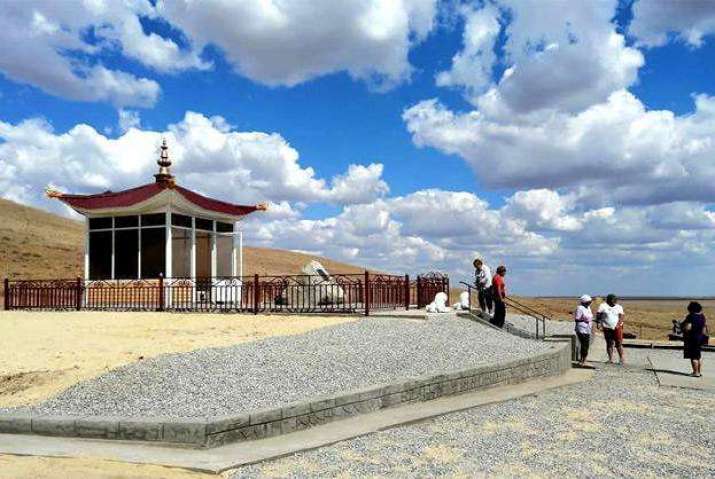
* Tsannid Chöra (philosophical monasticschool) is a term used in Kalmykia for an educational center for Buddhist monks. It is derived from two Tibetan words—tsannid, which literally means “definitive characteristic” but is used also for “philosophy,” and chöra for “Dharma school” or “monastic school.” In the beginning of the 20th century, there were several tsannid chöra in the Russian republic.
** In 1922, Tsannid Chöra moved to IkiChonos, Tselinny District, where it functioned until 1935.
See more
Памяти предков: в Калмыкии открылся «Зулын гер» (Золотая обитель Будды Шакьямуни)


